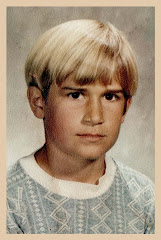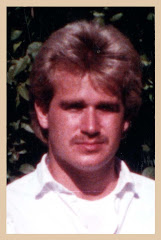Around a year ago I was going through some old boxes and discovered memorabilia from my college days. Amongst the remnants I found artwork which I thought had been lost. Being that I'm a 9 to 5 working stiff now, and have very little time for creativity, I thought it might be fun to go through these works and reminisce.
This artwork represents a very fertile, innovative and creative time in my life. The still life above was the first sketch I did in Art 101. I hadn't drawn in a long, long time (being involved in other mediums and motifs), but this return to the simplicity of paper and pencil was refreshing. (see sketches above left to right: Still Life to Life, Self-Portrait) Strangely, I only had one art class in Junior High, and one art class as a Freshman in high school--so I hadn't tested my faculties in a long time. I was pleased to find out that I could still ride the bike. But realism didn't hold my interest for long.

Obviously, we had to do anatomy and proportion studies, and mimic other artist's techniques in a few assignments, but predominately we sketched live models in class. (see anatomy/proportion assignments above and copying other artist's works and techniques below.)
We also spent a lot of time doing quick sketches by breaking the subject down into fundamental shapes. (see animal sketches from left to right: Dog, Cat, Bird)
We also explored enhancing line drawings, by using "accent lines" (thick and thin lines to suggest shading). These simple exercises increased my appreciation for representation and suggestion. (see accent line drawings below from left to right: The Line Up, Age Lines, Fine Lines)
Form these I began to explore avenues in minimalism that I still find fascinating to this day. Namely, representing a subject with as few strokes as possible. Indeed, I was intrigued with the fact that the mind had the ability to fill in missing information and recognize iconic shapes. (see my favorite drawings from that semester below--left to right: Thinker: Inside the Cubist--"thinking outside the box", Minimal Mammal, Scratch That). Herein abstracts also began to emerge from my consciousness.
It was during this time that I discovered and explored what I called "seeing through filters" (long before the days of Photoshop). Herein, something in the subject evoked a departure from realism--my mind allowing me to see alterations that captured the "essence" of the subject. (see ink drawings left to right: Modern Model, Venetian Ink)
I also began recognizing and using "forces" in my technique: horizontal blurring to suggest motion, vertical blurring to simulate dripping, diagonal lines and crosshatch to suggest varying textures, superimposed "bubble" to suggest a feeling of suspension, erratic scribbling to suggest being unkempt, chiseled lines to suggest hardness, smooth lines to suggest softness, vertical lines to accentuate height in rock formations, horizontal line to suggest the qualities of water, and chaotic strokes to evoke uneasiness. Examples of these are expressed in the charcoals and landscapes shown below.

"Seeing through filters" and using "forces" produced a wide variety of styles. Indeed, I never knew what to expect--neither, did my professor. In fact, she called me "the moodiest artist, that she had ever met." I don't know if it was intended as a compliment, an insult, or just an objective observation. (see charcoal works above: Horse Race, Hijab, Signs of Life, Sunbather, Transient, To Think, or Not to Think, Lady Lay)
I can safely assume that my professor wasn't displeased with my work by virtue of my grades. But in all honesty I admit that she gave me great latitude for exploration. While my classmates faithfully performed their assignments in realism according to her direction, I was allowed to "color outside the lines". God bless her for wisdom in this regard, for in a single semester I was able to explore diverse avenues of creativity and aesthetics. (see landscapes left to right: Utah, Sanitarium)
I haven't taken an art class since, but I look back with fondness on that aesthetic dawning--emerging from chrysalis.
(NOTE: Originals cropped, cleaned, and colored balanced in Photoshop)


























